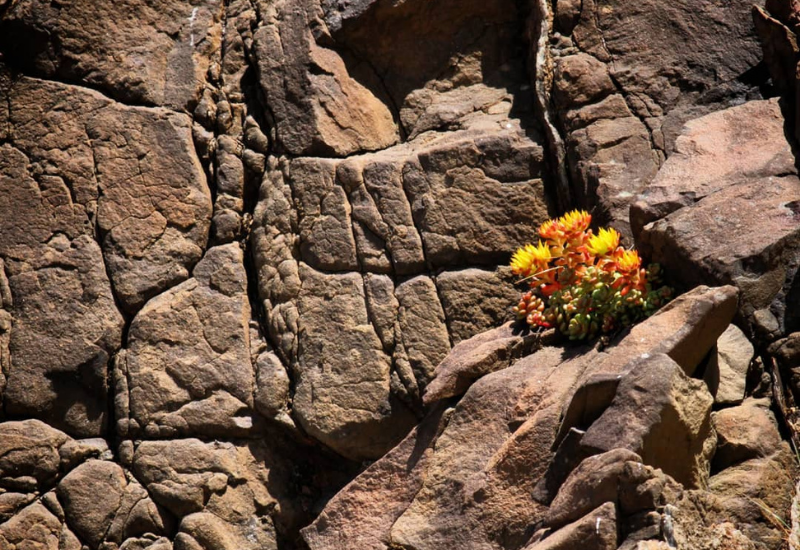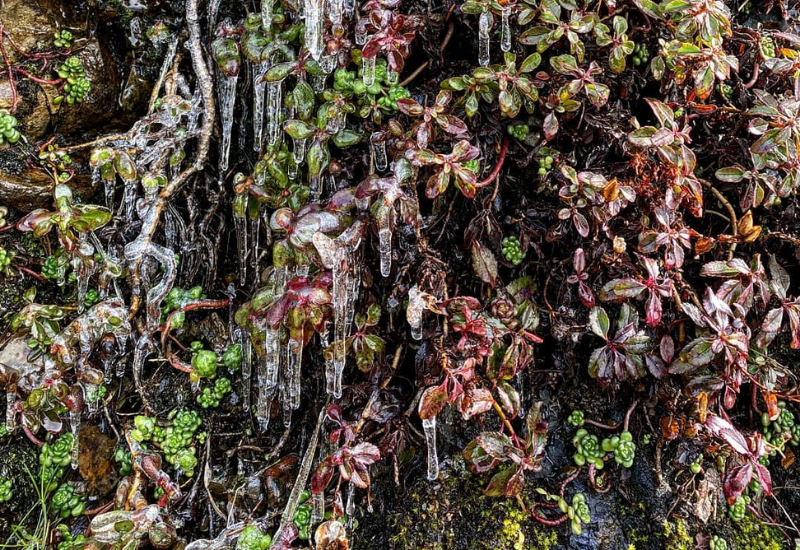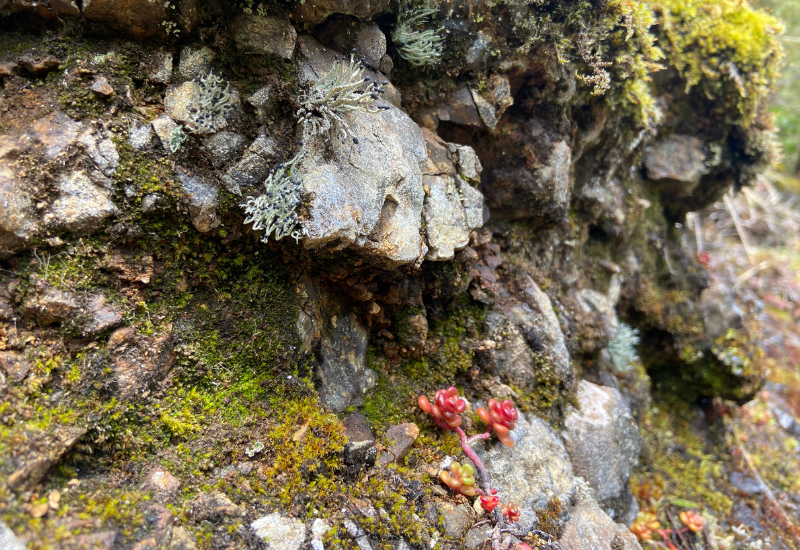
Oregon stonecrop grows out of rocks in the Rainforest Reserve.
There is no shortage of beautiful and interesting plants on the Oregon Coast—it would be difficult for anyone to choose a favorite! That being said, several of our team members have a special affinity for the Oregon stonecrop (Sedum oreganum).
It is one of several varieties of stonecrop, or sedum, that grow in Oregon, including broad-leaved stonecrop (Sedum spatulifolium) and Cascade stonecrop (Sedums divergens).

Oregon stonecrop and penstemon get an icy glaze in winter.
Oregon stonecrop is a native plant, commonly found west of the Cascades, all the way to the coast. You’ll also see it in other places along the Pacific Coast, from Alaska to California. This small but mighty succulent thrives when exposed to anything between full sun to partial shade. It is adaptable to a variety of conditions, from forest edges to cliffs and rocky slopes.
We see it on several of our properties, including the Rainforest Reserve. It also grows on Haystack Rock in Cannon Beach!
Like other succulents, stonecrop boasts tight green clusters of spoon- or egg-shaped green leaves—occasionally with a bronze tint. And when temperatures rise in late spring and summer, stonecrop can even assume stunning shades of crimson. In the summer and again in fall, they bloom with vibrant yellow, star-like flowers that benefit coastal pollinators.

In late spring and summer, stonecrop can turn various shades of red.
If you are looking for native plants to add to your garden, this is a good option. It’s easy to care for, tolerates different types of soil, provides valuable habitat and is a versatile groundcover that can fill in less-than-hospitable spots in your yard, such as rock gardens or between large stones.
At NCLC, we love those rare, endemic plants that provide unique character to the coast, but we also love the commonplace plants that are more accessible for all to see and appreciate (as long as we look closely at our surroundings!) and provide an array of benefits.
Comments